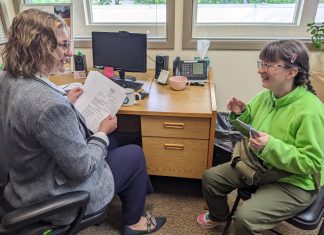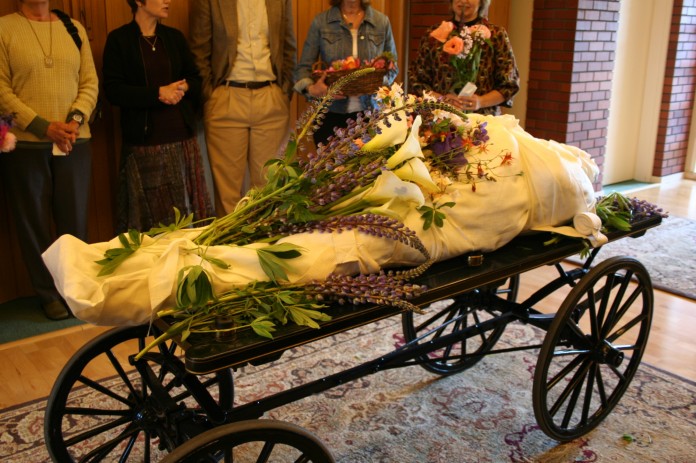
Many of us are so busy living, we don’t slow down enough to think about how our lives will end. But as artist and poet Khalil Gibran once wrote, “For life and death are one, even as the river and the sea are one.”
Some of our aversion to seeing death as part of life, however, may be due to our culture’s tendency to view death as morbid — a theme that becomes even more apparent during traditional burial ceremonies and memorials.
Moles Farewell Tributes’ General Manager, Lead Funeral Director and Green Burial Coordinator, Brian Flowers, is working hard to offer Whatcom County residents an alternative, environmentally-conscious approach to burial that is more consistent with Gibran’s sentiment. Moles Farewell Tributes’ unique and flexible approach allows friends and family to honor their loved one’s passing by returning them to the earth in a meaningful way that fosters healing.
“We give people about two weeks to two months to deal with a loss and then we expect them to get over it,” Flowers says, criticizing the societal norms that have been formed around death. “The measure of our grief is our love, and so we never really get over it. We get through it and maybe we learn to carry it gracefully, but you never really get over it, nor should you have to,” he adds. “Our culture has no prescriptions for grieving loss — no rituals anymore — we take a very passive approach to mourning. Someone dies and they are often whisked away, perhaps never to be seen again.”
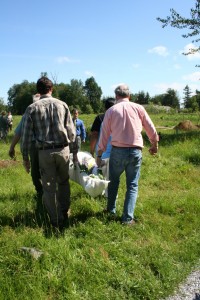
In addition to the emotional stress losing a loved one can cause, the way we’ve evolved to deal with death has also had a significant impact on the environment. “In the US, we bury enough reinforced concrete in burial vaults every year to build a two-lane highway from the nearby Canadian border to the Oregon-California border, along with enough casket steel to build the Golden Gate Bridge one-and-a-half times,” Flowers explains of the true cost of traditional burial. “We bury enough wood products to build 35,000 2,400-square-foot houses and enough embalming fluid to fill eight Olympic-sized swimming pools each year.”
Even cremation, long-considered less of an impact on the environment, has its drawbacks. “Cremation is a lesser of two evils, but the impact worldwide is significant because of the fossil fuel used to run a crematory and what is left behind is a very alkaline mixture of just a few concentrated elements that don’t return easily and safely to the soil or water,” Flowers notes.
All of this is what led Flowers to become a local leader in green burial options. “Green burial was incredibly nascent in the country only about 10 years ago,” Flowers explains. A former carpenter, Flowers often found himself building caskets in his line of work. Eventually, Flowers contacted an old family friend, Moles Farewell Tributes Owner and President, John Moles, about offering locally-made pine caskets. Moles had been following the green burial movement and wanted to learn more.
“I did some research and started to see opportunities,” Flowers recalls. “I bored the cabinet making guys I worked with as I waxed philosophic about Cartesian mind-body duality and how nothing epitomizes our divorce from the natural world more than contemporary burial practices, pumping a body full of chemicals and sealing it in steel and concrete.” From there, green burial in Whatcom County became a very real option and within a year, Flowers joined the Moles team.

Many of us take action in our daily lives to be thoughtful about the environment, whether it be through recycling or eating organic foods. But planning for our green burial can allow us to extend that selflessness even after we’re gone. According to Flowers, green burial is basically defined as burial, without embalming, in a 100% biodegradable container, and without an outer barrier.
Moles accomplishes this in a four-and-one-half-acre portion of their Ferndale Greenacres Memorial Park and Cemetery called The Meadow, which opened in January 2009. One of only five green burial locations in Washington State, The Meadow is Moles’ contribution to slow ecological restoration. “All of this material in our body is stardust — borrowed elements and nutrients that have cycled through natural processes for eons. We get to borrow them for a time and then they are supposed to return, but our traditional burial methods change that natural process dramatically,” Flowers explains.
“There are really two main considerations for green burial and that’s the ecological aspect and the meaning-making opportunities,” Flowers continues. “The white-glove-limousine funeral does not have a lot of meaning for many in our culture anymore.”
So as long as it’s not illegal or immoral, Moles green burial approach allows families a lot of freedom to develop a custom, creative memorial service that escapes the confines of tradition or expectation. The wide array of options can make the ceremony as unique as the individual being honored. “That could be a solid wood casket, woven wicker casket, cloth burial shroud, or it can even be a handmade lowering pallet and great-grandmother’s quilt. There’s a lot of flexibility,” Flowers says.
Full body burial in The Meadow employs techniques that might remind you of your garden. “Graves are shallower than traditional burial so there are more microbes, oxygen, and moisture in the soil to facilitate an ‘ashes to ashes, dust to dust’ return,” Flowers explains. “The bottom of the grave is layered with wood chips, and about 20% of the grave is filled with biomass — leaves, grass, cut flowers, sticks — then sand and topsoil. After one to six months, in the spring and fall planting windows, we put three native plants in the ground.” Examples are flowering red currant, Western red cedar, and camas bulbs. “We use no pesticides or fertilizer except for very judicious spraying to keep the Himalayan blackberries at bay, and right now we’re looking into using goats instead,” Flowers adds.
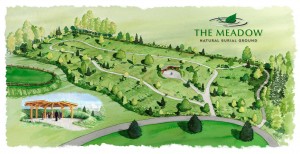
Graves are marked by a large, locally sourced river rocks, engraved with an inscription chosen by the deceased’s family. “These reduce the carbon footprint significantly compared to a bronze marker made in a foundry or a granite marker quarried in China or Pakistan and shipped here,” Flowers says.
Flexibility extends beyond The Meadow and into the service as well. “We allow for a graceful blending of beliefs, rituals and practices, both traditional and non-,” explains Flowers. “Grief is an active thing. Families have helped prepare the body, we’ve had shamans, Tibetan monks, Zen Buddhists, and Methodist ministers make blessings. We have had walking processions with our caisson or hand-pulled cart and we allow families the opportunity to close a grave by hand. Rituals can be simple and direct and connected.”
Even though a green burial can be highly personalized, it is not a lot more expensive that traditional burial. “The costs are in part based on individual choices. Some features of green burial are less costly while others are more, so the net cost of this custom experience is about the same as a traditional memorial,” Flowers explains.
Those that choose cremation still have green options as well. The RE Store’s REvision Division makes keepsake boxes for ashes from repurposed materials that would otherwise end up in a landfill. They are also exploring making caskets that also have another purpose before the owner passes. “I have a design in mind for my casket that would be for eventual green burial but use it as a bookshelf in the mean time — the shelves would convert into pieces of the lid,” Flowers explains with excitement. “The idea is that the making of it and having it there in my everyday world is a reminder and meditation on my own mortality.”
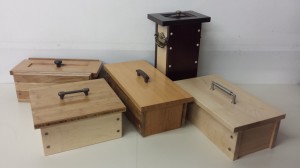
Flowers considers the thoughtfulness, creativity and flexibility of green burial options as one way families can process their grief and loss in a very healthy way. “Green burial can be used to craft unique, relevant, meaningful rituals — that don’t come from a prescription somewhere else in our culture — but that can bring closure to family and friends,” he says. “My job is to embolden and empower people to do what’s necessary and then walk alongside them and support them in that process.”
You can learn more about local green burial options by visiting Moles Farewell Tributes online or by calling 360-384-3401.






























